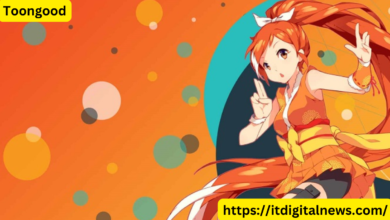In the era of social media, the term “influencer” has gained immense popularity, referring to individuals who leverage their online presence to influence the behaviors and decisions of their followers. Influencers are often seen as trendsetters, marketers, and voices of authority in various fields such as fashion, beauty, fitness, travel, and lifestyle. However, the term “influencer gonewild” has emerged as a provocative and controversial phrase that brings attention to influencers who push boundaries, break norms, or indulge in actions that stir up media buzz and online reactions. In this article, we will delve into the complexities of what it means for an influencer to “go wild,” the consequences of such behavior, and how it affects the influencer industry as a whole.
The Origins of “Influencer Gonewild”
The phrase “Influencer Gonewild” originated as a term used primarily in internet subcultures to describe something that was seen as untamed, unrestrained, or controversial. In the context of influencers, it often implies a departure from traditional norms and standards set by society, or even by the influencer industry itself. The term “gonewild” signals behavior that is shocking, audacious, or sometimes rebellious, intentionally designed to spark attention, create controversy, or simply push limits.
For many influencers, gaining attention is the ultimate goal. Social media platforms like Instagram, TikTok, and YouTube have created a space where followers crave content that is entertaining, dramatic, and eye-catching. Influencers who “go wild” may post content that challenges social expectations or engages in activities that are often considered taboo or unprofessional. This could range from excessive partying, controversial opinions, sexualized content, to sharing private or personal moments that cross the line of what is deemed acceptable in the digital world.
The Appeal of Being “Wild”
Why do some influencers choose to “go wild” and embrace this kind of controversial behavior? There are several reasons behind this choice, and they often vary based on individual motivations and career goals.
One key reason is the desire for attention. With millions of influencers competing for the same audience, standing out can be a difficult task. By posting content that is out of the ordinary, shocking, or rebellious, influencers can break through the noise and generate buzz. Social media algorithms, which prioritize content that garners high engagement, reward influencers who create provocative or sensational posts with more visibility. This increased visibility can lead to more followers, brand partnerships, and ultimately more opportunities to monetize their platforms.
Another reason is the desire to push boundaries and challenge norms. Social media has created a platform where many individuals feel liberated to express their true selves, and some influencers may see “going wild” as an opportunity to reject societal expectations and embrace a more carefree or rebellious lifestyle. In a world where influencers are often expected to curate perfect, polished images of their lives, those who break free from these constraints may find a sense of freedom and empowerment. They may feel that embracing their wild side helps them create more authentic and relatable content, even if it comes at the cost of controversy.
For some influencers, “going wild” can also be a strategy to attract a more dedicated and loyal following. While it may alienate certain followers who are uncomfortable with this behavior, it can also build a niche community of individuals who appreciate the boldness and rawness of the influencer’s persona. This group may see the influencer as someone who is unapologetically themselves, which can lead to stronger relationships and a deeper connection with their audience.
The Impact on the Influencer Industry
The “influencer gonewild” phenomenon has had a significant impact on the influencer industry as a whole. The rise of influencers who push boundaries and embrace controversy has sparked debates about the ethics of influencer marketing, authenticity, and responsibility.
For one, this behavior has caused many brands to reevaluate their partnerships with influencers. While controversial content can generate massive amounts of attention, it can also be damaging to a brand’s reputation if it is associated with risky or inappropriate behavior. Brands that collaborate with influencers need to carefully consider the type of content they are endorsing, as the actions of an influencer can directly affect the public perception of their brand. For instance, a brand that partners with an influencer known for posting explicit or highly controversial content might alienate certain customers or lose credibility with a more conservative audience.
The influencer industry has also been challenged by the question of authenticity. As influencers become more aware of the power of controversy, some may feel the pressure to constantly push boundaries in order to maintain relevance. This can lead to a disconnect between the influencer’s authentic self and the persona they present online. The pursuit of drama, shock value, or attention-grabbing stunts might overshadow the genuine connections that influencers once had with their followers.
Furthermore, the rise of influencers who engage in wild behavior has raised concerns about the mental health and well-being of both the influencers and their followers. Social media can be a double-edged sword; while it offers a platform for self-expression and creativity, it can also breed a toxic environment of comparison, anxiety, and unrealistic expectations. Influencers who engage in controversial or provocative behavior may feel constant pressure to outdo themselves, which can take a toll on their mental health. Similarly, followers who are constantly exposed to wild or extreme content may begin to internalize unrealistic ideals or unhealthy habits, leading to potential harm.
The Dark Side of “Influencer Gonewild”
While some influencers have successfully leveraged the “gonewild” approach to build their brands and gain massive followings, there is a darker side to this behavior. Many influencers who go to extreme lengths to get attention face significant backlash. Online hate, criticism, and trolling can take a severe toll on an influencer’s mental health, leading some to step away from social media entirely. The pressure to maintain a provocative online Influencer Gonewild Persona can create an unhealthy cycle of content creation, where influencers constantly push themselves beyond their limits to satisfy their audience’s demand for excitement.
Additionally, there is the potential for legal and reputational consequences. Influencers who engage in wild or inappropriate behavior may find themselves embroiled in scandals or lawsuits. For example, content that is considered defamatory, illegal, or harmful can result in legal action, putting the influencer’s career and finances at risk. In some cases, influencers may be banned from social media platforms for violating terms of service or engaging in inappropriate behavior.
Conclusion
The rise of “influencer gonewild” behavior has undeniably reshaped the influencer industry, drawing attention to the lengths some will go to in order to stand out in an oversaturated digital world. While it can lead to increased visibility, brand partnerships, and loyal followings, it also carries significant risks and challenges. For influencers who choose to embrace this controversial approach, it is essential to carefully weigh the consequences, both for themselves and their followers.






